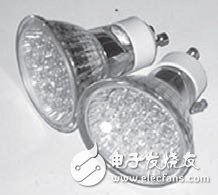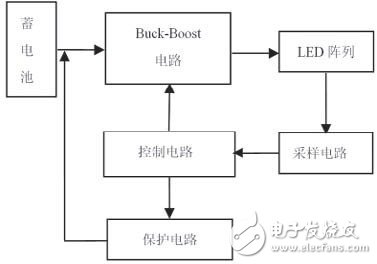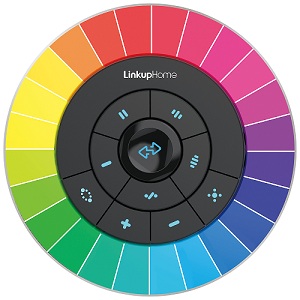LED is the abbreviation of Light EmitTIng Diode, a semiconductor that converts electrical energy into visible light with an efficiency of 80% to 90%. Such semiconductor components have generally been used as indicator lights since their development. With the development of science and technology, LED has had a profound impact on the field of lighting, and is known as the fourth generation of illumination light after incandescent, fluorescent and gas discharge lamps. In the mid-1980s, LEDs began to be used in automotive high-position brake lights. In the 1990s, LED backlights for automotive instrument panels commonly used LEDs as solid-state new sources.
After entering the new century, the LED light source technology has developed faster, and the high-power white LED made by the phosphor coating process has reached 100lm/W. As the output luminous flux continues to increase, LEDs have more room for development in the promotion and application of automotive lighting.
1 Car lamp function and requirements
At present, cars are becoming more and more civilian, and have become the main means of transportation. The safety of driving has aroused widespread concern in society. According to incomplete statistics, the mileage of a car at night or under natural light accounts for 25% of the total mileage, while traffic accidents here account for 40% of the total accidents, and more than half of the casualties occur at night. . Therefore, the exterior lights and signal lights are the key components for safe driving of the car, and the following conditions must be met:
(1) The car illuminator lights up without delay, the response time is faster, giving the driver more reaction time.
(2) The illumination is strong, and the driver's field of vision is improved at night or when there is insufficient natural light, and the indication of the external signal light is stronger.
(3) High seismic resistance, high reliability, and avoid accidents caused by lighting failures.
(4) Energy saving, which can effectively reduce the emission of exhaust gas and protect the environment.
(5) Based on the increasingly fierce competition in automobile sales, the design of the lamp should be practical and beautiful.
2 LED becomes a new star in automotive lighting selection
2.1 How LEDs work
The LED is a special diode and is a semiconductor device in which a PN junction is formed by doping or the like. When the diode conduction condition is met, current flows through the LED, releasing energy in the form of light and heat. The LED is a current-controlled current-type component, and its luminous intensity is mainly based on the magnitude of the current passed. When it is forward-conducting, its voltage drop is very high, and it has a certain fluctuation range.
Since LEDs do not have infrared and ultraviolet radiation, the energy consumed is almost all thermal energy except for conversion to light energy, and can only be transmitted in the form of heat conduction. Therefore, the junction temperature will gradually increase when the LED is in operation. The LED is a device with a negative temperature coefficient. The current flowing through the LED increases with temperature, which forms a positive feedback, causing a further increase in junction temperature. If left uncontrolled, the LED will burn out. The thermal parameters of the LED are closely related to the junction temperature of the PN junction. The relationship between the dominant wavelength and the temperature is as follows:
Mp(Tl) = m0(T0)+ 3Tg #0.1nm/°C
As can be seen from the above formula, whenever the LED junction temperature rises by 10 ° C, the dominant wavelength (which can be observed by the human eye) drifts to the long wave by 1 nm (1 nm = 10-9 m), causing the LED brightness to drop and light decay. Therefore, if the individual LEDs are overheated, the uniformity of the LED array illumination will be deteriorated.
2.2 LED significant lighting advantages
LEDs are called new light sources because LEDs have the characteristics of point and solid-state light sources, so they have advantages that other lighting sources cannot match.
(1) LED life can reach 100,000 hours theoretically, and the actual life can reach more than 20,000 hours, which is more than 1 000 hours for general white light bulbs and 10,000 hours for daylight lamps. replace.
(2) No delay in lighting, faster response time. The LED's start-up time is only a few tens of nanoseconds, and the startup time is much shorter than that of incandescent bulbs.
(3) In the case of high light intensity and low natural light visibility, the incidence of automobile accidents is greatly reduced; basically no radiation, belonging to the "green light source".
(4) LED has small footprint, simple structure and high shock resistance. Designers can change the lamp mode at will, so that the car can be diversified to meet different consumer needs.
(5) LED light source is much less affected by voltage changes than incandescent light bulbs, showing excellent safety and reliability, while consuming 80% less energy than incandescent lamps with light efficiency, which is very energy efficient.
Based on the above advantages, LED can be widely used in automotive lighting, but a single LED can not meet the requirements of automotive lighting intensity, and must be used in series, parallel or series-parallel to form an LED array, as shown in Figure 1.

Figure 1 LED group synthesis of illumination source
2.3 LED driver design and features
LED drive methods can be used in resistor limiting, linear regulators and switching converters. The resistor current limiting scheme is suitable for low-efficiency applications, so the efficiency is extremely high, and this method is not used for automotive lighting with a wide input voltage range; linear regulators are suitable for low current or LED forward voltage drops are slightly lower than the power supply In the case of voltage, but also the problem of low efficiency and small input voltage range; the switching converter has the characteristics of flexible circuit topology, high efficiency and wide input voltage. Therefore, after considering factors such as work efficiency, installation size, quiescent current, operating voltage, noise, and output regulation, the drive circuit mostly uses a switching converter. The switching converter topology is divided into Buck, Boost and Buck-Boos. At present, LED is applied to automotive lighting, and its driving power supply must be a lead-acid battery.
Because the input voltage range of the battery will vary greatly from the normal range, the drive circuit generally uses the Buck-Boost topology to meet the voltage requirements of the LED array. The DC gain of this circuit topology (the ratio of the output voltage to the input voltage) is related to the duty cycle D (the ratio of the turn-on time to the period in one switching cycle). When the battery voltage is lower than the voltage required by the LED, adjust D > 0.5 to put the circuit in the boost state; when the battery voltage is higher than the voltage required by the LED, adjust D < 0.5 to put the circuit in a step-down state. The LED is a current-controlled current-type component whose brightness is proportional to the current flowing through it. If the LED is not driven by a constant current, the current passing through will cause the brightness of the LED to change even if the voltage is constant. In order to ensure stable and reliable brightness, the LED needs a constant current to drive, and the ripple current needs to be controlled to an acceptable level under any circumstances. Therefore, the output of the LED driver circuit must be a constant current output rather than a constant voltage output.
The schematic diagram of the LED driver circuit can be designed as shown in Figure 2.

Figure 2 LED drive schematic
As can be seen from Figure 2, the Buck-Boost circuit converts the battery power and supplies power to the LED array. The sampling circuit samples the current flowing through the LED and transmits the signal to the control circuit. The control circuit analyzes the sampling information, adjusts the duty cycle of the switching tube in the Buck-Boost circuit, and ensures that the current through the LED is constant; when the circuit is abnormal, the power is cut off by the control protection circuit to ensure that the LED is not damaged. In general, the LED driver circuit must meet the following requirements:
(1) Lifting and lowering function. When the input voltage or the voltage drop of the LED itself fluctuates, the output voltage is adjusted to meet the requirement of constant output current to ensure stable and reliable LED illumination.
(2) High power conversion efficiency. To reduce drive losses, save costs, while reducing battery charging times and extending battery life.
(3) Brightness adjustment function. When the surrounding environment is very dark, the signal light often does not need to drive at the maximum current. At this time, the driving current can be controlled to change the brightness of the LED, thereby reducing the power consumption of the LED. A common method of adjusting the drive current is to use PWM signal control.
(4) It has a perfect protection circuit. Various protective measures should be provided to protect themselves and the LEDs from working reliably. For example, low voltage latching, overvoltage protection, overtemperature protection, output open or short circuit protection.
(5) Good heat dissipation. From the thermal characteristics of LEDs, temperature is one of the important factors affecting LED operation. When driving at night, the LED is on for a long time. Therefore, it must have a good heat dissipation function to ensure the life and reliable operation of the LED.
RGBW bulbs add RGB colorful light based on the traditional warm light, they are suitable for home, bars and offices. Once turning on the RGB colorful lighting, you can begin the party anytime and anywhere with your family and friends. Users can choose the light mode according to time, scene, mood, and also can adjust the brightness, color temperature and color of the light. Using energy-saving and high-quality LED lamp beads, the light source is stable without stroboscopic, the effective life can be more than 20000 hours. Our LED products can meet global quality standards and pass European testing by TUV Rheinland. Bulbs have certifications such as EMC, RED, LVD, ROHS, REACH, ERP and FCC.
With the exclusive designed 2.4G remote controller, get you off the switch and turn on / off the lights anywhere, one remote controller can set 4 groups, each group is recommended to match up 8pcs bulbs, one remote controller can max control 32 bulbs. This remote controller is suitable for all 2.4G versions of RGBW products under [linkuphome".
The remote control uses colorful touch buttons, the color touch buttons are comfortable and sensitive. The remote controller has the functions of grouping, lighting, brightness adjustment, color light automatic cycle mode, three cycle speeds can be choosed. The wireless control distance is around 20 meters. Low power consumption makes the remote controller only need 4pcs AA batteries, but can be used for two years.

Product Parameters
Description: RGB Bulb with 2.4G Remote Control
Product dimension: Dia66mm * H122mm
Material: PC & Aluminum & Nylon
Working Voltage: 100-240V
Frequency: 50/60Hz
Color Temperature: RGB+Warm White (3000K)
LED Power: 9.5W (710lm)
Base Type: E27/E26/B22
Packing: color box
Warranty: 2 Years
Color box size: 15.3*7.4*7.4cm
G.W. of Unit: 0.22kg
N.W. of Unit: 0.18kg
Certification: CE(EMC,RED), ROHS,FCC
Discreption: 2.4GRF Wireless RGB Remote Controller
Product dimension: 105mm *33mm
Product Net Weight: 150g
Material: ABS & Metal
Battery: 4*AA battery (not included)
Working Power: 6V
Standby Power: 3 mW
Frequency Band: 2400-2483.5MHz/2.4GHz
Control bulb qty: 1-32 pcs
Packing: Each in a color box
Warranty: 1 Year
Color box size: 16.7*14.7*4.5cm
G.W. of Unit: 0.22kg
N.W. of Unit: 0.15kg
Bulb With Remote Control,Remote Control Light,Remote Control Bulb,Remote Control Outdoor Lamp
Ningbo Homey Photoelectric Technology. Co., Ltd , https://www.linkuphome.com